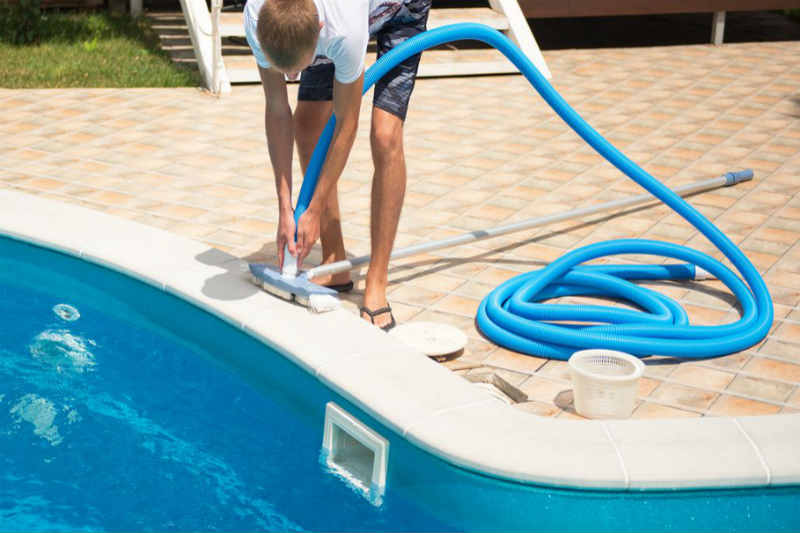Pool maintenance is a set of measures aimed at maintaining the purity of water and maintaining the physico-chemical parameters of the aquatic environment within strictly defined limits. To date, there is a wide range of products, tools and devices on the market, using which it becomes possible to keep the pool clean, to ensure comfortable and safe operation of the swimming tank.
How to take care of the pool? This question is asked by many of our customers, so we decided to put together a quick guide with which you can avoid annoying mistakes and effortlessly keep the pool clean and tidy.

So, before you clean a frame or concrete pool, you should brush up on the features of their structure. Each tank consists of a bowl, which can be made of various materials – concrete, plastic, metal. Of particular importance is the filtration system, through which dirt, large particles of debris and organic impurities are removed from the water.
The bowl and equipment connected to it (filters, heaters, lighting devices, water supply and intake systems) are constantly exposed to aggressive chemicals, ultraviolet radiation and other negative environmental factors. That is why, in order to clean the pool, you need to perform a number of actions:
- clean (wash) the bottom of the pool and its walls from limescale;
- remove fat deposits, concentrating in the waterline zone;
- get rid of the dirt that accumulates in the filter;
- carry out shock chlorination;
- adjust water chemistry.
Let’s consider each step in more detail.
Cleaning the bottom, walls and waterline (how to clean the bottom of the pool from sediment?)
Dust, soil particles, leaves and other debris create a noticeable sediment at the bottom, which is a favorable environment for the development of microorganisms. The most common types of sludge that accumulate in open tanks are:
- silty particles (dust, sand, soil);
- mucous waste products of bacteria;
- limescale from hard tap water;
- insoluble iron compounds (rust);
- solid waste, organics, foreign objects, etc.
Remove sediment from the bottom of the pool with the utmost care, trying not to damage the decorative coating. In a frame pool, it is recommended to clean the bottom and walls with soft brushes and sponges that allow you to remove sand from the bottom of the pool. You can also use a manual electric vacuum cleaner.
In summer, when the air temperature rises to 25-30°C, algae begin to actively develop in the pool, as a result of which the water acquires a dense green tint. It is quite difficult to clean the pool from greenery, because you have to fight with living microorganisms, which multiply very quickly, conquering all the free space.
The easiest way to clean the pool from green plaque is to use disinfectants, which include active chlorine. If the water is sufficiently clean and clear, then algaecides can be used to remove algae. After the death of microscopic algae, the sediment will be removed using a filtration system.

Removal of limescale (calcium and magnesium salts)
Lime in the pool: how to remove? A similar problem is faced by reservoir owners using hard water from a central water supply or wells equipped in limestone horizons and other carbonate rocks.
It will be much easier to clean the pool from plaque if you prevent its formation, use filters and chemicals that soften the water.
You can clean the pool from limescale with the help of special chemicals that effectively cope with pollution, while keeping the surface of the bowl safe and sound. It is quite possible to remove limescale from the pool, to clean the bottom of sediment manually, however, if we are talking about tanks of an impressive volume, the time spent on this event will be significant.
Modern robotic vacuum cleaners that work in automatic mode help to clean the bottom of the pool. For small tanks, it is more advisable to use special cleaning kits that are connected to the pumping system using a skimmer or vacuum cleaner nozzle.
It is allowed to clean the pool from limescale that forms on the surface of stainless steel parts (stairs, railings, nozzles, attractions) only using products that do not contain chlorine. Otherwise, the activity of corrosion processes increases, which leads to a loss of the glossy sheen of the metal.
